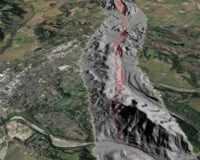This year is the centennial of the infamous [it was praised by eugenics advocates, the KKK, and even by Hitler] Immigration Act of 1924, the first major piece of U.S. immigration law covering all countries of origin for emigres. Also known as the Johnson-Reed Act, it established a quota system of 2 percent of the foreign born residents of the United States as of the 1890 census. It also excluded any immigrants who would not be eligible for citizenship as defined by already extant law ,such as the Chinese Exclusion Act of 1882.
The first large wave of immigration to the U.S. had begun in the 1840s and lasted until 1889, during which time 14 million immigrants arrived. Germany, Ireland and the United Kingdom alone accounted for 70 percent of the new arrivals. The second major wave of immigration occurred between 1890-1919 when more than 18 million immigrants arrived, 60 percent of whom came from Eastern and Southern Europe, large numbers from Italy, Austria-Hungary, Russia and Poland. The 1924 Act, which established quotas by nationality, favored British and Western European immigrants and set limits by tracing the origins of the entire U.S. population, including those born in the U.S. before 1890. It required immigrants to obtain a visa from a U. S. consulate in their native country, and it also established the U.S. Border Patrol.
By 1960, the largest number of immigrants in most states came from Germany (17 states), Italy (10), and Canada (10), reflecting the continued bias in immigration law toward citizens of Western European countries. Immigration patterns to the United States were totally revolutionized with the passage of the Immigration and Nationality Act of 1965, which eliminated the quota system, prioritizing family unification. A new wave of immigration began, with most immigrants coming from Latin America (49 percent) and Asia (27 percent), with Mexico alone accounting for 25 percent of these new immigrants.
California immigration patterns before its admittance to the Union in 1850 are difficult to determine with any accuracy. Until the gold rush, the majority were Californios – the name given to Spanish/Mexican migrants into the California territories during the 18th and 19th centuries from what is now Mexico. Americans from the eastern States were beginning to arrive in the 1830s, and then in large numbers during the gold rush of 1848-to-1852. By the end of 1849, the non-native population of the California territory was around 100,000, compared to the pre-1848 figure of fewer than 1,000.
The 1850 census showed a total California population of 92,597, 23 percent of whom were born in foreign countries. Sonoma County’s non-native population was 2,208.
Who came to Sonoma, when and why and how they shaped our valley will be explored in a forthcoming article. This story is being told in the current re-imagining of the exhibits in the newly named Sonoma Valley History Museum (formerly the Depot Park Museum). The totally re-designed museum is scheduled to reopen in early 2025. Stay tuned.
By Kate Schertz
Kate Schertz is a retired Foreign Service Officer from the US Department of State and a member of the Board of the Sonoma Valley Historical Society.






Be First to Comment